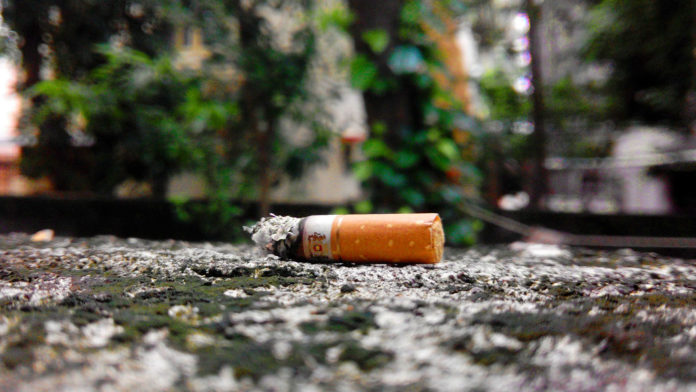Beyond secondhand smoke or the impacts of farming tobacco, cigarettes create another environmental issue that many people wouldn’t think to list: the non-degradable butts that wind up littering streets, waterways, and parklands.
Their small size may make them seem insignificant, but with five trillion cigarette butts discarded each year, they are the most common waste product in the world. Up to two thirds of these end up in surrounding environments. And even when they end up in landfills, this is not proper disposal for hazardous waste.
Critics say it’s high time for tobacco companies to take responsibility.
Kelley Lee, professor of health sciences at Simon Fraser University, proposes a framework for this as a co-author of a recent study.
Studies around littering behaviour demonstrated a 65 percent littering rate for cigarette butts. This is a big problem, as cigarette butts contain dozens of carcinogens and toxic chemicals that can leach out into the environment and waterways. Also, cigarette filters are made of plastic that can break into smaller pieces, but will never degrade.
Other industries that make products that create hazardous waste, like paints and fluorescent light bulbs, are already legally responsible for the environmental impact of their products throughout their life cycle. This includes collecting and processing waste products. This type of legislation is called Extended Producer Responsibility, and Kelley believes it should also apply to cigarette butts.
Currently, any cleanup efforts usually come from local governments and taxpayers. Extended Producer Responsibility would see the environmental cost incorporated into the retail prices of cigarettes. Collection, cleanup, and processing would then shift to cigarette producers.
This ensures improvements to the system in multiple ways. The economic burden would fall to tobacco companies, who would then have an incentive to seek out better product design and consumer programs to lessen environmental risks. This could include specialized waste collection and consumer education surrounding the environmental impact of cigarette waste.
The sight of cigarette butts on the street is so common that they are rarely noticed. Better awareness of their significant environmental impact could shift attitudes and increase safe disposal.








































